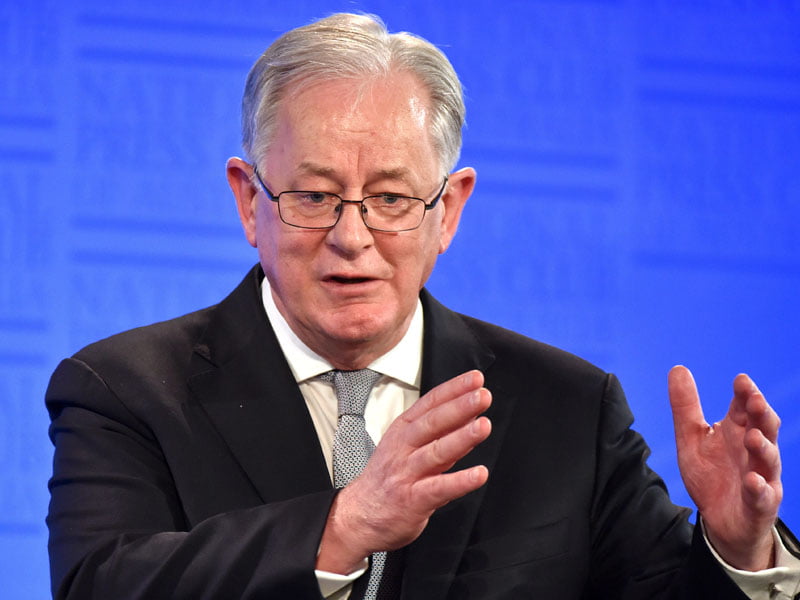After years of negotiation and numerous leaks, the official final text of the Trans-Pacific Partnership agreement has been released.
About the only place where the hype meets reality is in the length and complexity of the agreement.
In announcing the release, Trade Minister Andrew Robb repeated the assertion that the 12 countries covered by the agreement represent “around 40 per cent of global GDP.” Using World Bank GDP data for 2014 in US dollars the more precise estimate is 36 per cent.

The magnitude of the agreement for Australia shrinks when you subtract the GDP of the USA (22.37 per cent of world), Japan (5.91 per cent), New Zealand (0.25 per cent) and Australia (1.87 per cent). We already have free trade agreements with the first three and don’t trade with ourselves.
The remaining 8 countries Brunei Darussalam (0.02 per cent), Canada (2.29 per cent), Chile (0.33 per cent), Mexico (1.65 per cent), Malaysia (0.42 per cent), Peru (0.26 per cent), Singapore (0.40 per cent) and Vietnam (0.24 per cent) only account for 5.85 per cent of global GDP.
True students of trade and diplomacy would be required to line up this text against the text of those other agreements and against various GATT agreements to work out exactly how this agreement changes Australia’s position in the world.
To be honest some of the provisions in the agreement such as those covering telecommunications look quaint. Commitments on opening up telecommunications services have existed in WTO treaties since the mid-1980s and were extended to basic telecoms in 1998.
Part of the reason for inclusion was to ensure availability of telecommunications services for global corporations, though at the start there was an expectation that incumbent telcos would invest in new markets. That didn’t occur. But there are still US lobbyists paid to ensure that trade agreements include these provisions.
The issues that get talked about is the Dispute Settlement (Chapter 28) and Intellectual Property (Chapter 18).
The Inter-State Dispute Settlement (ISDS) arrangements are between parties. They don’t create rights for firms to sue governments but for governments to take other governments to an independent tribunal. The ISDS procedures do not cover the rights under the Intellectual Property chapter, though this will be reconsidered early in the term.
Only an intellectual property lawyer could make sense of the detail of the IP chapter, though many of the provisions reported on with some gravitas in the media or with great excitement on social media appear to have been misrepresented or are merely repeating existing rights.
For example, the provision that the law must provide a mechanism for an ISP to be required to provide a rights holder with information identifying alleged infringers isn’t particularly an issue (18.82.7). The Dallas Buyers Club case resulted in such an order being made, but as the rights holder wasn’t prepared to provide commitments about the use of the information it wasn’t provided.
The high interest in intellectual property is usually associated with the perception of the USA as a great powerhouse of invention.
The Global Innovation Index uses the World Intellectual Property Organisation statistics on resident patent applications as one of its measures on innovation outputs. On that measure the USA in 2013 accounted for only 15.01 per cent of global patents, and the twelve TPP countries together only amounted to 29.90 per cent. The global powerhouse of patents is China with 36.77 per cent of all patents.
The role of securing intellectual property rights is itself in some question. What is known as ‘’new growth theory” in macro-economics posits that the source of economic growth isn’t the innovations made and kept by firms, but the innovations that spill-over into the rest of the economy. The internet is a case of a huge collection of innovations, most of which aren’t secured by patents.
In books like The Earth is Flat the global communication revolution that has the internet at its heart is one of the factors making “globalisation” and unstoppable juggernaut.
This then poses the question of whether trade agreements like the TPP are merely exercises to keep bureaucrats and lawyers busy, and out of the road of the real economy. It is reminiscent of the hairdressers and other essential professions piled onto the advanced spaceship in Hitch-Hiker’s Guide to the Galaxy.
Creating “freer” trade can occur through devices other than treaties. More than a hundred and thirty years ago seven sovereign British colonies contemplated establishing a “union” to eliminate tariffs between them and the new layer of government would have responsibility customs tariff, currency, posts and telegraphs, external relations, defence, maritime services and immigration. Company law, copyright, patents, marriage, banking and insurance were included. (List courtesy of J M Ward’s The State and the People).
It is remarkable how much overlap there is between this list and the list of items that are included in the trade agreement.
The difference, however, between freer trade through political union rather than treaties is that in the case of the former there is a democratically-elected representative parliament that governs these powers, not a “take it or leave it” set of trade provisions.
Ultimately the TPP doesn’t justify the fuss being made over it.
It doesn’t extend Australian trade opportunities much, and is heading in entirely the wrong direction in trying to develop democratic control over trans-national corporations.
*Photo Credit: Getty
Do you know more? Contact James Riley via Email.

